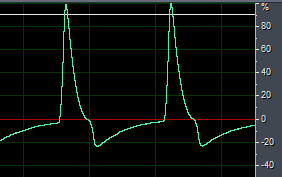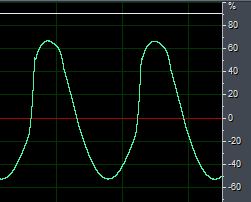The Mighty Conn 652
3-Manual Theatre - 1978
Blue Book says
3 61-Key Manuals
32 Pedals w/sustain
Double Expression Pedals
Sustain & Reverb
Tremolo & 2-Speed Leslie
One-Man Band, Strummer w/22 Rhythms
Chorus Control
Calliope Tuning
Transposer
10 Preset Pistons
7 Accent Pistons
Viole Celeste
15 Couplers
Tibia Jazz Voicing
Four Ranks of Tone Generators
In my opinion, Conn manufactured one of the best sounding analog organs. The single voices sound organic, combined with other tabs it has a very discrete sound. The philosophy of this organ is taken from historic Theater Organs: Horse-Shoe design, ranks and finally the sound. Even the technology is borrowed from these so-called multiplex organs. The tibia section is comparable to a rank of pipes witch is reused by all manuals and their tabs with their different footages. The reed tabs exist only in 8' and can be coupled to 16' or 4'.
The 650 and 652 organs are truly rare in Europe. I have got the 652 model, the previous owner had directly imported from the US. It has some newer MOS IC technology inside compared to the Conn 650. However, the famous single tone generator remained the same – and it has additionally 3 other tone generators, which are:
2. a separate duo-phonic stair-step generator for the pedals,
3. a divider pulse generator for the Solo manual,
4. a stair-step generator for the Celeste tabs.
However, it is the conventional pulse generator, which makes the Conn sounding so special. Each single tone has a separate oscillator, which can be tuned individually. Each oscillator circuit has two outputs: one pulse and one sine-like. Alas, the pulse is not a rectangular pulse and tibia sine is not a sine curve!


The Conn pulse wave The Conn tibia wave
Is this Conn Digital?
The 652 audio path is pure analog. You can even find some audio circuits without Printed Circuits Boards, which reminds me of a style of the 50ies.
On the other hand the Conn engineers realized the keyer circuits with new custom ICs (lots of pins but one half are unused!?). These ICs are digitally controlled, the keyboards are driving a scanning matrix and several multiplexers. All wirings between the generator tones and the single footages are made internally of the IC. All footages and couplers to other manuals are accomplished by "Software", i.e. a hard coded serial pattern fed to the ICs. This simplifies a lot within the organ, but I don't know how long these special ICs will be available, when one if them goes bad.
My Modifications
Solo Generator
I did not like the Solo generator. According to the service manual, it produces also “pulse” waves. Actually I recognized that it consists of 7 TOS divider ICs generating 30% rectangle signals. It sounds like cheap organs of the 70ies, when they tried to emulate piano sounds. I presume this crime was confessed by a new generation of Conn engineers who tried to come up with a new sound. Conn was always being taunted for not having a varied sound spectrum, obviously this was a try to widen the spectrum by another “pulse” generator. I actually replaced this generator by a (Dr. Böhm) sawtooth generator, and now it sounds great. The Tuned Percussion registers, like Piano, Bells and Banjo are also attached to this generator. Their sound considerably profit from the new waveform.
Digital Reverb
I also replaced the spring reverb with a inexpensive digital reverb, nothing spectacular. But it sounds much better now, and has many more effects now. It is hidden under the front keyboard on right hand's side, so all knobs are accessible.
Register Tab Intonation
I had to intonate some tabs, which were too loud or too soft to my taste. And finally I replaced a Pedal 16” tuba with a 32” by a very simple circuit change (divider flip flops were already in place).
And else
My Conn is a 110V type and a transformer from 230V to 110V is convenient, even under 50Hz. Only drawback is the Leslie speaker which is spinning a bit slower than intended.
I must say that I am happy to have my small cannibalized Conn for spare parts. Three custom design Conn-ICs of my 652 went bad in total, and there are many of that type in that organ. I fear that the MOS technology was not very mature in these times.
Werkmeister III
I decided to tune the single tone generater not well-tempered, but with Werkmeister tuning. The solo tone generator and the pedal generator are tuned a bit up, the Celeste generatur down. The result is amaizing, chords sound directly and are much more powerful! I will make some recordings in the future.
| My personal ranking | **** (4 Stars of 5) |
| plus | Tone of single tabs sound so sweet, easy to repair |
| minus | Tone generator for solo manual only reactangle waveform. Drums are dispensable. Custom ICs. |
Selected Links
The Bone Doctor playing the Conn 650, with free songs downloads. Because of these songs and their sound, I wanted the Conn.
Replacement parts by the Organ Company, here I found also the service manual.